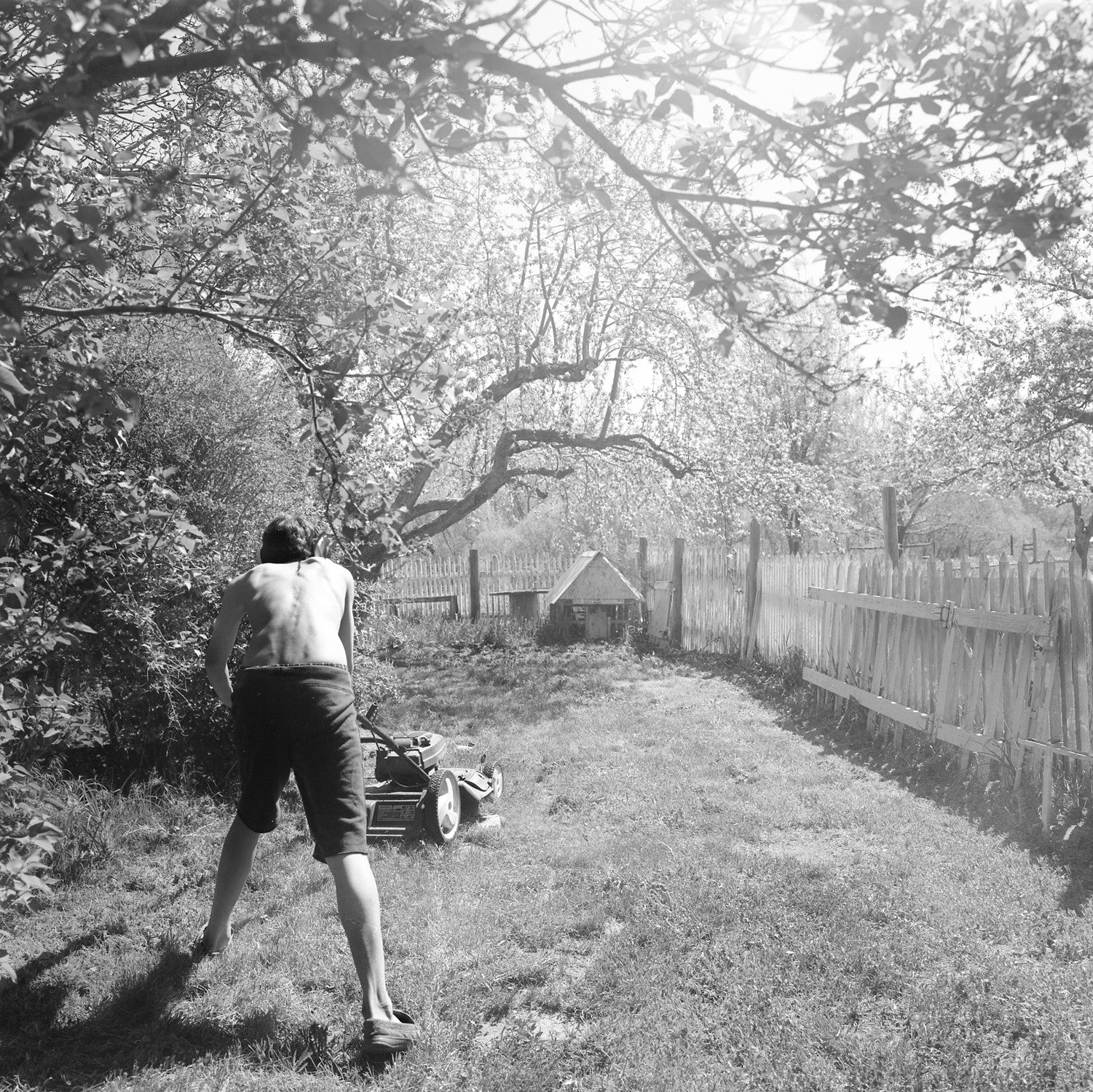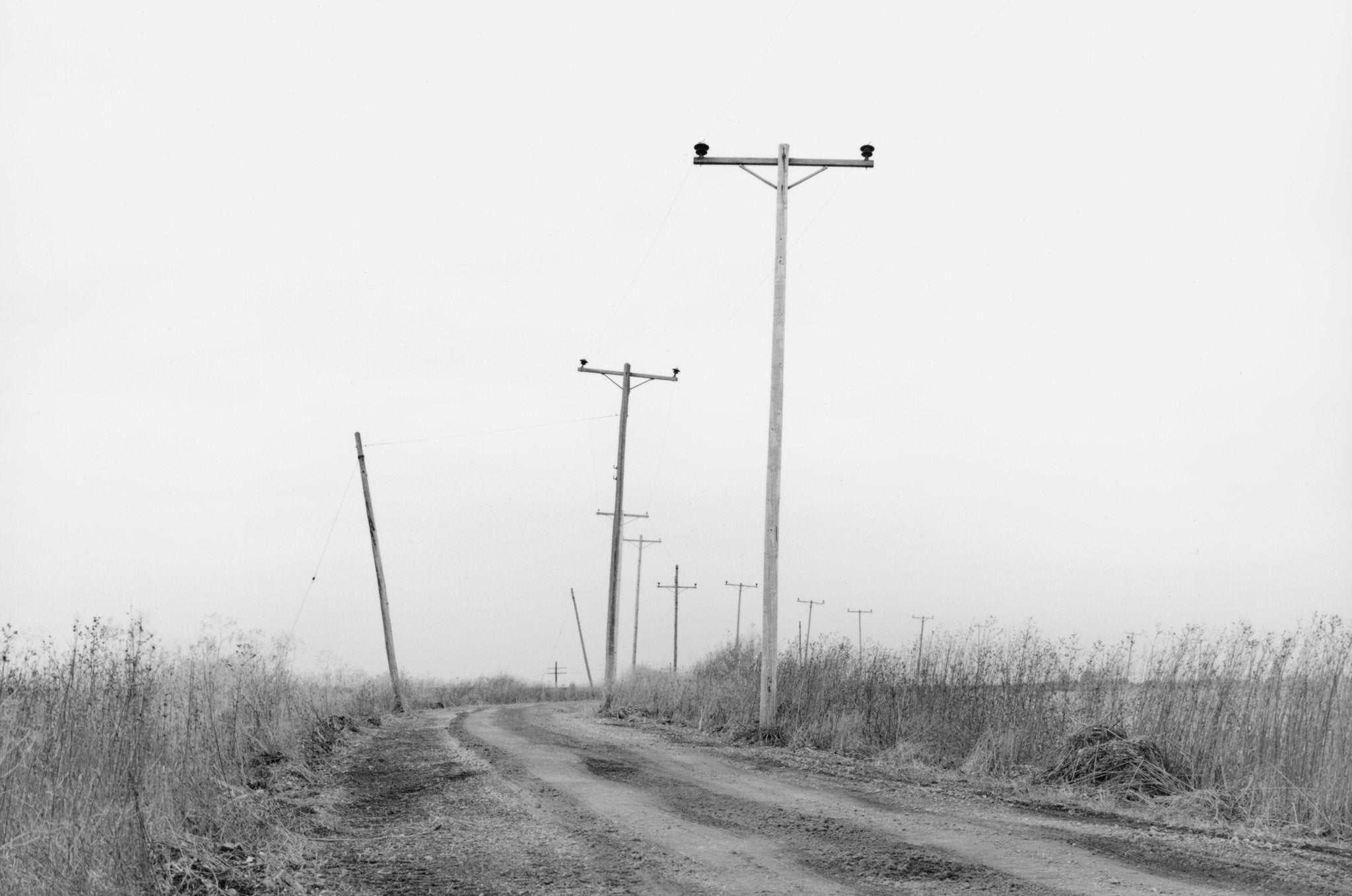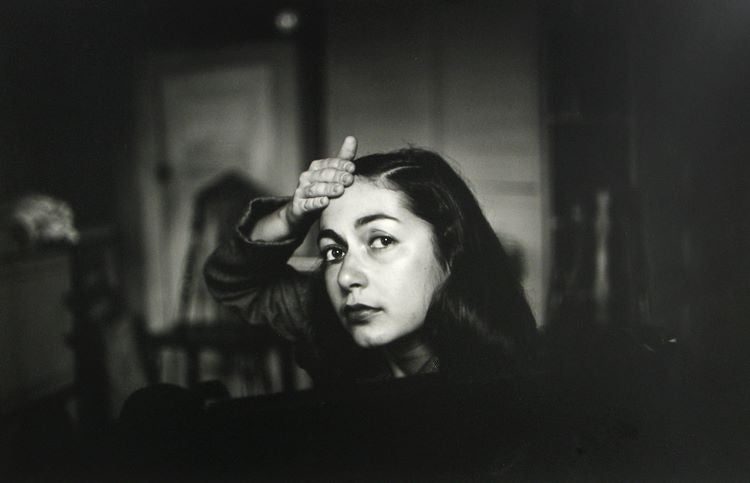
I remember
I remember going to Skyborn Skateland in Fairborn, Ohio, on Saturday afternoons when I was a kid, like around age 11 or 12. The time I recall most clearly must have been 1980, when Michael Jackson’s Off the Wall was inescapable. I don’t think anyone minded if the DJ spun “Don’t Stop ’til You Get Enough” twice during the few hours we spent rolling around, and “Rock With You” was gentle enough to be played during those times when they lowered the lights and you (terrified and exhilarated, if you were like me) asked someone to hold hands while you skated.
I remember the companion property next door to the Skateland was the Skyborn Cruise-In, a triple-X-rated drive-in theater. I couldn’t understand the double entendres of the movie titles on the big marquee, but I knew they had something to do with being grown up.
I remember that I also couldn’t exactly understand why we were all skating in long ovals and singing/yelling “Hey! Teacher! Leave them kids alone!” along with that song that was popular the time. Those lyrics seemed grown up, too, and even more aggressive than the porn titles. Because mostly I liked school and all the teachers were pretty great. I just figured that things were probably different for kids in England or something.
I can’t remember exactly which of my friends had an older brother who had a copy of The Wall, but I remember listening to all four sides of the LP to try to figure out what was going on. Whatever it was, the wall that concerned Pink Floyd was way different from the one that Michael Jackson was thinking of, even if he was off it.
I remember reading the liner notes for The Wall – a thing I still love to do whenever I get a new record – and seeing that Toni Tenille had sung background vocals. It was a relief to think that there could be a link, however tenuous, between the understandable world of “Love Will Keep Us Together” and the impenetrable one of “Another Brick in the Wall.”
I remember “Comfortably Numb.”
I remember not understanding the verses, the parts about mass anestheticization or whatever, but I was really into the choruses. I don’t even know that you would call them verses and choruses, but I mean the two parts sung by David Gilmour that begin with the same couplet – “There is no pain/you are receding” – but which are nonetheless different.
I remember writing these words, from the second chorus of “Comfortably Numb,” on the inside cover of a grade school notebook:
When I was a child
I caught a fleeting glimpse
Out of the corner of my eye
I turned to look but it was gone
I cannot put my finger on it now
(I remember, in case you are concerned, figuring out somehow soon thereafter that the scratching of Pink Floyd lyrics into my Trapper Keeper wasn’t going to be a sustainable lifelong practice. I’m sure this must have happened by the time I first heard “Radio Free Europe.”)
I remember writing these words, from the play In the Park by Edgar Oliver, in my notebook immediately after I saw him perform the piece last summer:
Longing is the only magic of which we are capable
I remember how I felt when I heard the first few lines of Edgar’s play:
I am a hesitant man. It seems to me that I have spent my life half lost in some rapturous dream I dreamt as a child from which I have never awakened. Perhaps I don’t want to wake up. If I woke – I think I would find that I have failed to live. I think that I died as a child. Well – some part of me stopped. But some part of me kept going. I keep on wandering.
I remember when some part of me stopped. At least, I sort of remember.
I remember sitting in Mrs. Tully’s class in seventh grade and just staring at the floor and everything was all darkish grey and slightly out of focus, which seemed somehow worse than being entirely out of focus.
I remember at this time going right home to bed after school and just crying a lot. For the life of me, I don’t know why.
I remember this lasting maybe ten days, or two weeks at most, and then it lifted and focus returned, owing to no reason any more apparent than that which brought it on. And yet, I think my life can in some way be divided into the time before this event and the time after.
I remember much later reading The Crying of Lot 49.
Oedipa, perverse, had stood in front of the painting and cried. No one had noticed; she wore dark green bubble shades. For a moment she’d wondered if the seal around her sockets were tight enough to allow the tears simply to go on and fill up the entire lens space and never dry. She could carry the sadness of the moment with her that way forever, see the world refracted through those tears, those specific tears, as if indices as yet unfound varied in important ways from cry to cry.
I remember starting to carry the sadness.
I remember a kid whose name was Carl, but whom everyone called Buddy. He and I were both on the tennis team. He made the trip up to northern Ohio the one time I made it to the post-season sectional singles tournament, just to root me on. He was the kind of person who made you understand that even in the general wretchedness of high school, there could be absolute delight in just knowing someone.
I remember when I got the call in my freshman year in college that Buddy had been killed in a car crash. I don’t remember whether it was my mom or my dad who broke the news. I do remember that, even though I was already 18, he was the first person I’d ever known who died. All my grandparents were still around.
I remember being at Buddy’s graveside when his casket was lowered and I could see his older sister who was a friend and I could see on her face a sorrow that I had never known or even conceived of.
I remember understanding at that moment: so this is the deal.
I remember an article in The New Yorker about the poets Matthew and Michael Dickman and I was interested and kept reading both of them and in a poem called “Nervous System,” Matthew Dickman wrote this:
When I think of the childhood inside me I think of sunlight dying on
a windowsill
The voices of my friends
in the sunlight
All of us running around
outside our
deaths
I remember all of us running around on a tennis court, or skating around a roller rink, outside our deaths.
I remember that right after I got the call about Buddy, my new friends Stacy and LuAnn walked me all over campus with my arms over their shoulders and just let me talk. They were both from Chicago suburbs and much more sophisticated than me, but they didn’t care that I hadn’t yet heard of the Cure. They were impossibly beautiful. They still are.
I remember feeling bad and weird that I didn’t cry at Buddy’s funeral.
I remember later that fall of my freshman year in college, I got to the final match of the intramural tennis tournament. I had reached the quarterfinals of tournaments before, and a semifinal or two, but never a final. Stacy, who was also a tennis player, came to watch, and was the only spectator. (Intramurals aren’t really that big a deal.) Somehow I won the match. I shook hands and left the court and hugged Stacy and just lost it. I cried and cried for my dead friend, and for having a new friend who would come and cheer me on, and I guess also for the sheer joy of winning a fucking tennis tournament for the first time ever.
I remember maybe laughing a bit at first when I read an essay by Flannery O’Connor in which she said:
The fact is that anybody who has survived his childhood has enough information about life to last him the rest of his days.
I remember reading something by Michael Chabon that sounded like he took O’Connor’s brief thought and ran with it:
The world is so big, so complicated, so replete with marvels and surprises that it takes years for most people to begin to notice that it is, also, irretrievably broken. We call this period of research “childhood.”
There follows a program of renewed inquiry, often involuntary, into the nature and effects of mortality, entropy, heartbreak, violence, failure, cowardice, duplicity, cruelty, and grief; the researcher learns their histories, and their bitter lessons, by heart. Along the way, he or she discovers that the world has been broken for as long as anyone can remember, and struggles to reconcile this fact with the ache of cosmic nostalgia that arises, from time to time, in the researcher’s heart: an intimation of vanished glory, of lost wholeness, a memory of the world unbroken. We call the moment at which this ache first arises “adolescence.” The feeling haunts people all their lives.
I didn’t remember, but my sister did remember when I mentioned Skyborn Skateland to her, that after those Saturday afternoons at the rink, mom and dad would pick us up and we’d go to five o’clock Mass in Fairborn. I understood that people went to church to find that vanished glory.
But I remember that nothing said or done there at Mary, Help of Christians made me feel any sort of wholeness near like just a couple hours earlier when maybe Debbie Southward didn’t say no to holding my hand during the slow skate and they played a song as perfect as “Rock with You,” or “The Rose,” or “Lost in Love” and the disco ball slowed way down and so did time itself.
I remember thinking that the world couldn’t be entirely broken – even if I couldn’t articulate it that way at the time – if someone could write a song with the line:
I say: love, it is a flower, and you its only seed
I also remember, incidentally, the massive relief I felt at the end of the slow skate that I hadn’t fallen on a curve and brought Debbie down to the hard wooden floor with me, and also that my right hand wasn’t so terribly sweaty as I’d imagined.
I remember that Chabon went on to say that
the worlds we build out of our store of fragments can be only approximations, partial and inaccurate. As representations of the vanished whole that haunts us, they must be accounted failures. And yet in that very failure, in their gaps and inaccuracies, they may yet be faithful maps, accurate scale models, of this beautiful and broken world. We call these scale models “works of art.”
I remember that I thought of Flannery O’Connor and Michael Chabon when I more recently read Wright Morris, who knows from works of art.
The impressions of childhood, indelibly imprinted on a mind open and eager for sensations before it is cunningly attuned to ego satisfactions and evasions, are the ideal circumstances for the nature destined to be an image maker. Adult impressions accumulate like the yearly fall of leaves, providing both protection and compost, waiting for the moment that the seedbed will sprout with its new growth. It will prove to be more than the writer had in mind, and much of it will be new.
I remember finding Stacy on facebook just a few years ago after falling out of touch after college and before I could even friend her, I saw on her timeline that she had survived breast cancer. An old seedbed sprouted anew, and I added plenty of waterworks of my own to nourish it.
I remember thinking when I read this one line by T.S. Eliot that it was almost unnecessary to write the rest of Four Quartets (although of course it was entirely necessary):
People change, and smile: but the agony abides.
I remember before I ever met Raymond Meeks I looked at his website and saw many things that I loved, among them a book called Middle Air.
I remember moving into the first house my parents ever actually owned, in Enon, Ohio in 1977. It sat on three quarters of an acre of former farmland and was so brand new that the yard was still just dirt waiting to be graded and seeded.
I remember epic dirt clod wars with new friends in the neighborhood. And I remember after the yard was graded and seeded becoming involuntarily acquainted with a lawn mower.
I remember thinking something about Middle Air that was along the lines of what Morris said, even though I hadn’t read him yet. That Meeks simply and directly tapped into an impression from childhood that many people can easily relate to, and that is yet difficult to describe completely or even entirely well (and which has nothing specifically to do with the act of lawnmowing). But also that Middle Air as a work of art was controlled by an adult, who had actively protected and nurtured the impression.

I remember thinking this was a good lesson.
I remember being grateful to Marilynne Robinson for a similar lesson when she offered this insight into the character of Sylvie, the young narrator of Housekeeping, Robinson’s great novel of childhood loss and longing.
[she] deploys every resource she has to try to make the world comprehensible. What she knows, she uses, as she does her eyes and her hands.
To the degree that she has not taken the impress of society she expresses the fact that human nature is replete with endless possibilities and, by implication, that the world is accessible to new ways of understanding.
I remember a time – at least I want to imagine that I do – when I had not taken the impress of society.
But because we can only remember that time, and never relive it – and even the recollection is spotty and comes only if we are very very lucky – we must actively figure out a way to keep the world accessible to new ways of understanding: to maintain the meaning of our early impressions of youth despite the knowledge gained with age.
I remember stealing and retrofitting this idea from Karl Ove Knausgaard.
As your perspective of the world increases not only is the pain it inflicts on you less but also its meaning. Understanding the world requires you to take a certain distance from it. Things that are too small to see with the naked eye, such as molecules and atoms, we magnify. Things that are too large, such as cloud formations, river deltas, constellations, we reduce. At length we bring it within the scope of our senses and we stabilize it with fixer. When it has been fixed we call it knowledge. Throughout our childhood and teenage years, we strive to attain the correct distance to objects and phenomena. We read, we learn, we experience, we make adjustments. Then one day we reach the point where all the necessary distances have been set, all the necessary systems have been put into place. That is when time begins to pick up speed. It no longer meets any obstacles, everything is set, time races through our lives, the days pass by in a flash and before we know what is happening we are forty, fifty, sixty . . . Meaning requires content, content requires time, time requires resistance. Knowledge is distance, knowledge is stasis and the enemy of meaning.
I remember not minding one bit that Knausgaard took several hundred pages to circle around this point.
I remember discovering Joe Brainard and feeling like he had found a way to collapse meaning and knowledge into one.
I remember when Michael Jackson died and lots of people were driving around Brooklyn with windows open playing his songs, and it was sad and lovely. I was never a massive fan, and I don’t know his story with any sort of authority, but he seemed to be searching endlessly for some sort of meaning denied him in childhood.
I remember just moments ago looking back through all this stuff I’d written and thinking no one will care to read it and anyhow: I can’t explain, you would not understand, this is not how I am.



